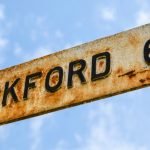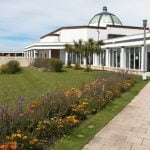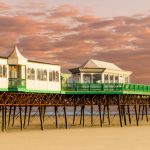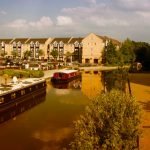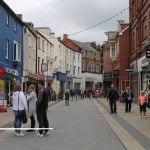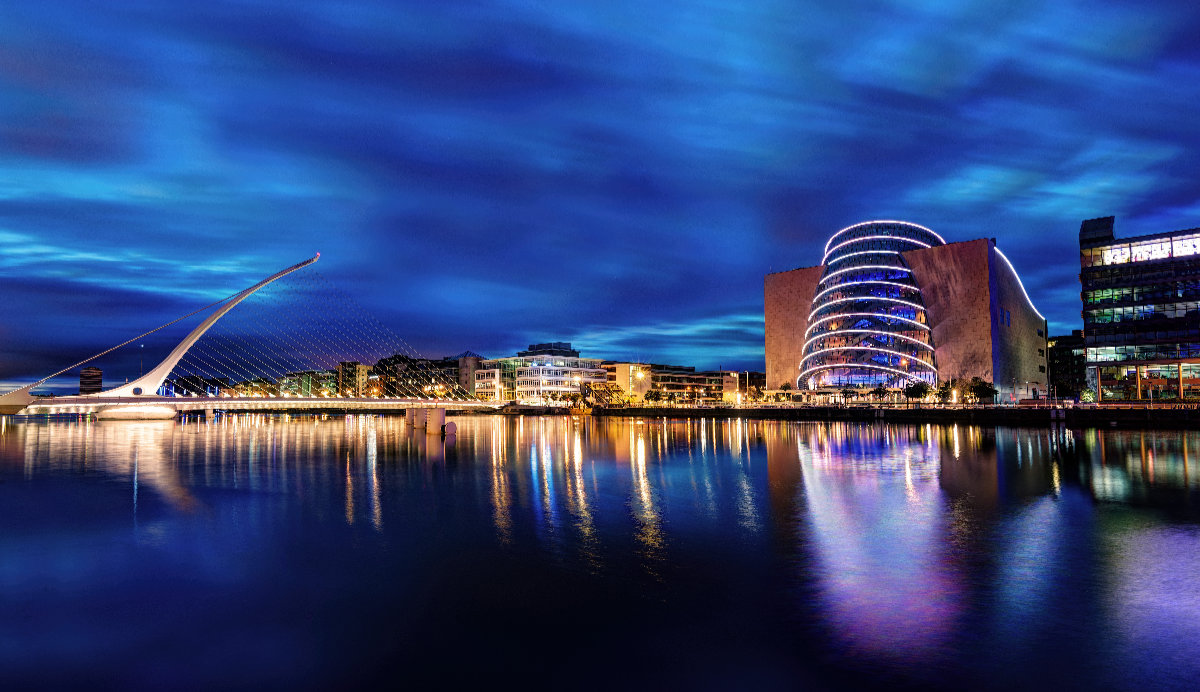
Dublin’s Fair City, with Five Minutes Spare!
“Why is Dublin the biggest city in the world? Because it keeps Dublin’”
And on that inward groan, we wanted to take the Five Minutes Spare tour of this never-ending town. With Dublin in our sites let’s get down to history. We can already tell this place is jam-packed with interesting facts, fantastic attractions, and multiple reasons to visit. Let’s start with the good old days and work our way forward from there.
Dublin (before all the Dublin’)
There are a few conflicting histories that mention the evolution of Dublin. One theory is that the town was mentioned by Ancient Egyptian scholars circa 140 AD, another is that it was an amalgamation of both a Christian town and a Viking settlement, yet another mentions it as a Celtic town. It is widely believed the Vikings founded it and held onto the city for around three hundred years. They were first expelled in the 9th century but returned many times over the next two hundred years. Indeed, Vikings were still kicking around Dublin in the 12th century – far later than in the surrounding countries.
The name was originally Dubh Linn. Dubh meaning black and Linn meaning pool of water. It is thought this comes from a tidal pool in the River Poddle on which the town sits. To this day, Dublin in Irish is Dubh Linn. King Brian Boru of Ireland fought to expel the Vikings once and for all at the Battle of Clontarf in 1014. In spite of this, they didn’t leave formally until 1171. Norse occupied Dublin was a fairly basic place.
The Vikings tended to build in wood and thatch and use towns as a base to raid outwards. Still, there would have been a thriving trade in skins and furs, carpentry, and jewellery. The Norsemen would also have had a huge trade in captured slaves. These wouldn’t necessarily have been the People of Colour that movies make out. The slaves would have been from Europe, Britain, and any other colonies in between that they raided. In those days if you wanted a wife you went and stole one.
Just to put the dates into perspective: the Normans invaded Britain in 1066, by which point the Vikings had given up and found Ireland. It seems they had a little influence here until the time when the last Viking army was chased across the sea to Scotland. Their king’s name was Ascall Mac Ragnaill and he was killed in a final, epic battle with King Dermot MacMurrough. Nevertheless, this victory came late enough that some 300 years of Dublin history had already been formed by the Vikings. If your ancestry is from Dublin, you might have Viking in you! If you’re a redhead? Definitely so.
In 1988 Dublin celebrated a millennium but it is not 100% accurate to date. It celebrated the anniversary of an attack by a Norse King on the city circa 989 which resulted in a twenty-day siege. The king that attacked this time was Mael Seachlainn. Goodness gracious but there were a lot of kings back then. The modern equivalent would be anyone with more than a thousand Instagram followers announcing themselves as royalty.
After the Norman invasion of Ireland around the 12th century, Dublin was an English foothold in the country. It went on to become seat of the High Kings of Ireland and received its first official charter in 1192. We believe that, prior to this, charters were a thoroughly English concept and towns in other places weren’t aware they needed one in order to be towns.
Post-Viking Dublin
The first Bishop of Dublin was anointed in 1028. When we hear about the Norsemen and Vikings, we assume that they would have been Pagan – and they were when they arrived. Around the time that the Vikings were raiding, Christianity was taking a firm grasp in the west. The first version of Christchurch Cathedral was built around the same time, in order to accommodate the new bishop. It is estimated that the population of Dublin during the 11th and 12th centuries would have been around 4000 people. That would make it bigger than most towns of the time. People didn’t congregate back then because it used up all the natural resources. That should hint towards how much they depended on the sea, and on trading with the English across the way.
A Norman army attacked in 1169 led by the MacMurrough one from earlier who had sought help from across the water. He died in ’71, and his death was quickly followed by the High King O’Connor’s attempted invasion of Dublin. He failed, and with Normans in possession of the city, the last of the Vikings gone and nobody else to challenge, the rule of Dublin defaulted to the English King. He came over, made everyone swear allegiance to his throne, then skipped merrily back across the sea after declaring Dublin the possession of the merchants of Bristol. Thus started hundreds of years of English migration, which kept Dublin doubling, as the old joke goes.
Wow. That’s a ton of history. Let’s pause for some fun facts to inject happiness back into this subplot. Enjoy!
Fun Facts about Dublin!
A city as old and as stately as Dublin is bound to have a few interesting tales to tell. Here are a few of our favourite finds here at Five minutes Spare:
- Dublin makes up a whopping 20% of Ireland’s population. Although it only had 4,000 people in the 12th century… it just keeps dublin’, har har har.
- There are an estimated 666 pubs in Dublin, which is worrying. This figure is a few years old now though, so it’s probably more than that. It is also home to the Brazen Head – a pub opened in 1168 that has pulled pints every year since!
- There has been a serious string of famous faces out of Dublin. We’ll cover some in a moment – but Oscar Wilde, George Bernard Shaw, and (more recently) Connor MacGregor, are all Dublin born and bred. Their contribution to the world of entertainment has been staggering[i].
- In honour of their ancient Viking heritage, the TV series Vikings was filmed near the city. It may also have had something to do with low taxes on filming in Ireland, but at least it worked out as a sort of historically accurate portrayal.
- O’Connell Street is the widest street in Europe, but it also has a bridge that makes for a pretty reliable tourist attraction. Why? It’s the only known European bridge that is equally as long as it is wide. It’s like some sort of engineer’s paradise.
- The music industry would not be the same without Dublin. U2, Kodaline, The Script, Thin Lizzy, and My Bloody Valentine are but a few of the bands that have rocked their way to international success from meagre Dublin origins[ii].
- We’re not even going to explain that one.
So, with all of these things going for it, how did Dublin get to be the big band producing city that we know and love today? On with the history, say us, and let’s get to the bottom of this!
Dublin in Medieval Times
The Merchants of Bristol were now the official leaders of Dublin. They had only been there for about fifty years when a massive fire ripped through the town and destroyed most of the wood and thatch the Vikings had built. It was quickly rebuilt, then revisited by the Normans in the 13th century when they built a giant wooden fort there. The walls were strengthened and, by the 13th century, the population had doubled to 8k.
As a merchant city, Dublin thrived on imports and exports. Wine, pottery, linens, and wool would have been traded at the annual fair and weekly markets. In 1224 a freshwater piping system graced the city and in 1305 they appointed security guards to police it. In 1317 a Scottish army hopped over to have a go and the Dubliners destroyed the Liffey bridge to stop them. The Scots abandoned the siege because the Irish burned their own houses to stop them from sheltering there. It was a clever move but one of the more insane ways to stop a fight from history.
Cut to the 16th century when a young lord heard his father had been killed and decided to rebel against English rule. He left Dublin and returned with his buddies. The Dubliners let him in but then he and his men killed the Archbishop, losing the respect of the townsfolk. They turned against them and the young lord was killed for his stupidity.
Henry VIII Decided he was a church icon, closed all the monasteries and friaries, and it made not a jot of a difference to the people of Dublin. It was largely ignored by the townsfolk who quickly learned that the further you are from London, the less you need to do what they say.
During medieval times there were two further occasions of note. One was when a gunpowder store exploded and killed 120 civilians in the town. The other was an outbreak of plague at the tail end of the 16th century which killed thousands. Despite freshwater supplies, sewers hadn’t been invented yet and wouldn’t hit Dublin until the 18th century, when Cholera and numerous other diseases had already run rife.
The 17th Century onwards
By 1640, the city was already 20,000 strong. You can imagine that the streets weren’t all glamorous and poverty was a real problem. Repeated outbreaks of plague coupled with war 2 years later, led to lots of deaths. The Catholics were expelled between 1642 and 1646 as a result of the English civil war.
Unlike England, the people of Ireland experienced an Industrial Revolution before the railways reached them, particularly in seaport cities. By 1670 they had a theatre, a newspaper, a deer park, and the streets were lit by residents who kept candles outside their doors. A law was introduced to stop people from building fire-plagued houses and build brick ones instead. In 1682 a hospital for soldiers was opened but it now stands as the Irish Museum of Modern Art.
The Huguenots were expelled from France around the same time and many of them settled in Ireland, both north and south. A strong linen and wool trade was the result as flax growing became the farmer’s choice. In 1700 a population of 60,000 was recorded and a library was built. A workhouse went in to help the ‘poor’ problem. A fire Service came in 1711, a second hospital was erected in 1721 and a third in ’29. In 45 they added St Patricks, and this was followed by a maternity hospital in ’52. Parks and gardens were added aplenty since the Victorians made them fashionable. By the end of the 18th century, they had a police force, a prison, several government buildings, and a stagecoach service.
Nineteenth-Century Dublin
In 1800 the population was an astonishing 180,000 people. Poverty was rife and the city council spent all of their money on buildings and bridges. Sewers improved the poverty situation a little and electric lights came to town. The sewers were extended several times and then a railway was built in the 1830s. It was a thriving city, a part industrially successful diamond in the rough, and part garden city. The National Gallery opened; the Gaiety Theatre was built. 1845 saw the (catholic) University of Dublin opened. Trinity College actually opened for the first time all the way back in 1592 – but they didn’t accept Catholics until 1873. Nevertheless, the Catholic Church disapproved of their students studying there.
More modern history saw the Easter Rising take place in Dublin. The rebellion was short-lived and resulted in 15 executions by the British Government. Bridges, sewers, and eventually the Abbey Theatre were built (in 1904). The slums of Dublin weren’t demolished until 1912… around a hundred years after everyone else. In 1941 German bombs killed 28 people causing a memorial garden to be placed in 1966[iii]. The city was extensively redeveloped in the 60s and 70s and we are running out of time to talk history!
New apartments were being built to replace slums in Dublin as late as the 1990s. In 1988, the city celebrated a millennium of existence as a tax-paying city. Over the course of a thousand years, Dublin has risen and risen, being taken prisoner, laid siege to, and held hostage as it went. It took a thousand years for it to house more than 20% of the Irish population as it now does. It took a famine, several plagues and a handful of German bombs. Now? Dublin is indestructible. Give it another thousand years and it will still be standing… with a population of over 2 million and the third wave of Vikings in charge.
Famous People from Dublin
There have been loads of famous people to have lived here. There have been so many that it might be easier to summarise them with categories:
- Writers and Playwrights – Maeve Binchy, Patrick Kavanagh, John Byrne, Francis Sheridan, William Butler Yeats, and countless others.
- Actors – Colin Farrell, Michael Gambon, Aiden Gillen, Pat Kenny, Brenda Fricker…
- Singers – Westlife and Boyzone, Siva Kaneswaran from the Wanted, Joe Elliott from Def Leppard, Phil Lynott from Thin Lizzy, oh yes, and we have Dublin to blame for Jedward.
- Sports personalities – Ken Doherty the Snooker Champion, Steve Collins the Boxer, Willie Carrick, and Steve Dawson (as well as countless others) the footballers[iv].
There has also been a myriad of leaders, politicians, presenters, radio stars and all sorts of other famous people to have come from Dublin. It’s the kind of place that you are sure to spot a star or two if you just hang out at the Temple bar long enough.
Dublin Attractions
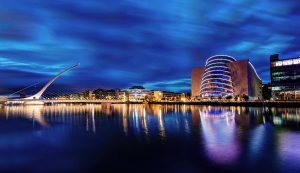
Image: Lukas Bischoff Photograph/Shutterstock.com
Now that we have put the past behind us, let’s move on to the attractions. What’s the best thing to see and do in Dublin? Don’t forget you can add your comments on our forum if you disagree…
Historical Sights and Landmarks
Dublin Castle was developed from the original Norman Fort which would have been built in wood. It was originally formed by the Vikings in the 13th century and you can still visit it to this day. Worth a peek. Another beautiful old building to get your Snapchat game on point is St. Patrick’s Cathedral… the photographer’s dream. It was founded in 1911 and is breath-taking in beauty. Failing that, check out Christchurch Cathedral. It is built on the same site as the original nearly a full millennium later. That’s pretty impressive, even if it is in its umpteenth incarnation.
Museums and Galleries
Of course: the National Museum of Ireland is in Dublin. This place is charged with preserving the history of the city and adding to their collection as the years accumulate around it. If you are in town to see old buildings that have been preserved, you might wish to pop into Trinity College. One of the biggest attractions in the city, this place is full of students, learning, and one of the biggest libraries you are likely to ever encounter.
The National Gallery of Ireland is situated on Merrion Square and features some of the best works from Irish history. Fine art lovers will adore this location. As an interesting museum aside, however, we recommend that you go and visit the old prison. This is a great activity to do in Dublin with kids since it lets them see the inside of the cells. You can get a guided tour here for maximum learning potential if you are going in a group.
Lastly, don’t forget that the Guinness Storehouse is in Dublin. Get drunk, do a tour, learn about Guinness. You can’t go wrong.
Shopping and Retail
There are a loads of places in Dublin to spend your hard earned cash. You can find shops in Stephen’s Green at the shopping centre there, or you can pop into the Jervis, which has been there since the nineties. Finally, the Victorian-built mall known as George’s Street Arcade is ready and waiting for you to arrive.
Outdoor and Recreation
Believe it or not, the Glasnevin Cemetery makes for a lovely wander around and comes with its own museum. Phoenix Park is where you will find every student in the city when the sun comes out, but you can also have a picnic on St Stephen’s Green if you feel the weather changing for the better.
Sporting clubs include four separate premier division teams! Dublin is home to the Shamrock Rovers, The Bohemian FC, St Patrick’s Athletic and UCD. There are a further two teams in the first division, and more thereafter.
If rugby is your sport you have the Garda Rugby Club, the Guinness Rugby Club, or the Old Belvedere Rugby Club to choose from. You could attend the Leinster cricket club, the Merrion Cricket Club, or visit the Dublin Cricket Stadium.
Finally, if you like golf, Deer Park Golf is a firm favourite. Needless to say, there are several other choices depending on whether you go north or south out of the city.
Other Notable Attractions
There is a whole world to Dublin that we barely scratched. With that in mind, try to fit in the following attractions if you have the time:
- The Jameson Distillery – home of whisky brewing in Ireland and second to Guinness only in reputation.
- The Irish Whiskey Museum – because if you have already done Guinness and Jameson, they don’t want you to get bored.
- The Irish Emigration Museum – which details where, when, and how the Irish came to be some of the most celebrated emigrants in the world.
- The Teeling Whiskey Distillery – we are sure you get the idea.
- The National Botanic Gardens – you wouldn’t want to miss these exotic plants.
- Dublin Zoo – home of the wild things and once the famous lion of MGM productions.
- The Jeanie Johnston Irish Famine Experience – the clue is in the name.
- The Famine Sculptures – while you are in the mood.
- The Rock and Roll Museum.
- Or the Pearse Lyons Distillery… because why not see another one?
And we have still to get to the bottom of Dublin! Don’t forget to let us know what your favourite Dublin things to do are!
Got Five Minutes?
If you enjoyed our guide and want to keep reading, you are more than welcome to browse our travel journals. We keep track of all the most interesting things to do in your hometown, so you don’t have to!
[i] https://www.irelandbeforeyoudie.com/10-fun-interesting-facts-about-dublin-you-never-knew/
[ii] https://www.beelovedcity.com/facts-dublin
[iii] http://www.localhistories.org/dublin.html
[iv] https://en.wikipedia.org/wiki/List_of_people_from_Dublin

